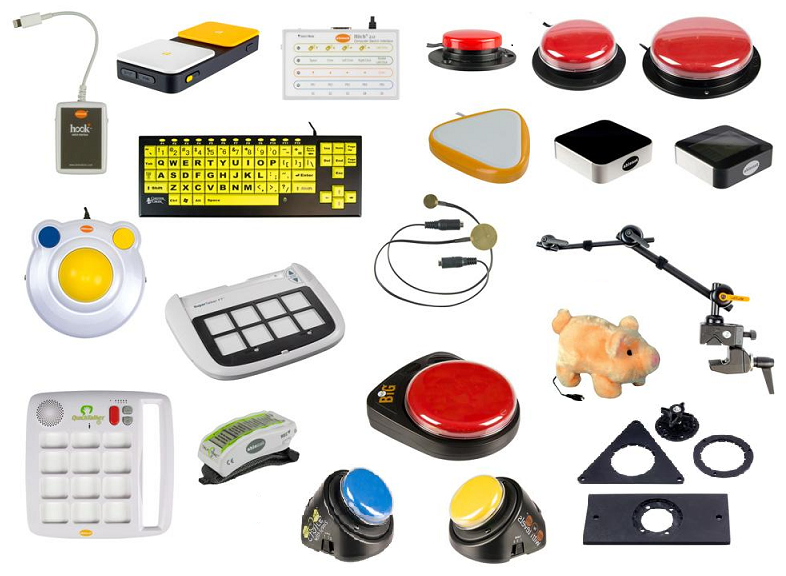
In an increasingly digital world, assistive technology plays a pivotal role in improving the quality of life for individuals with disabilities. From communication aids to mobility devices, these technological advancements have not only transformed daily living but have also paved the way for greater inclusivity. In this comprehensive article, we will delve into the world of assistive technology, exploring its various forms, applications, and the profound impact it has on the lives of those who depend on it.
Introduction
Understanding Assistive Technology
Assistive technology, often abbreviated as AT, refers to a wide range of devices, software, and equipment designed to assist individuals with disabilities in performing everyday tasks and activities. These innovative tools aim to bridge the gap between disability and ability, enabling people to lead more independent, fulfilling lives.
The Significance of Inclusivity
Inclusivity is at the core of assistive technology’s mission. It strives to remove barriers and ensure that individuals with disabilities have equal access to education, employment, social activities, and more. As our society becomes more aware of the importance of diversity and inclusion, the role of assistive technology becomes increasingly significant.
Assistive Technology Categories
Assistive technology can be categorized into various groups, each tailored to address specific needs and challenges. Let’s explore these categories in detail.
Communication Aids
Communication aids are essential for individuals with speech or language impairments. They facilitate effective communication and help users express their thoughts and emotions.
Speech-Generating Devices
Speech-generating devices (SGDs) are electronic devices that produce speech or text based on the user’s input. They are invaluable for individuals with severe speech disabilities.
Augmentative and Alternative Communication (AAC) Apps
AAC apps are software applications designed for tablets and smartphones. They offer a portable and customizable solution for individuals with communication difficulties.
Enhancing Mobility
Mobility devices are designed to improve the independence and mobility of individuals with physical disabilities.
Wheelchairs and Scooters
Wheelchairs and scooters provide essential means of transportation for people with mobility impairments. They come in various models, including manual and motorized options.
Prosthetics and Orthotics
Prosthetic limbs and orthotic devices offer enhanced mobility and comfort for individuals with limb differences or musculoskeletal conditions.
A New World of Sensory Experience
Assistive technology extends its reach to individuals with sensory impairments, enhancing their ability to perceive the world.
Visual Aids
Visual aids, such as screen readers and magnification software, assist individuals with visual impairments in accessing digital content and information.
Hearing Devices
Hearing aids and cochlear implants are examples of assistive technology that enable individuals with hearing impairments to engage in conversations and enjoy auditory experiences.
Cognitive Support for Independent Living
Cognitive support technology assists individuals with cognitive disabilities in managing daily tasks and activities.
Assistive Apps for Memory and Organization
These apps help users with memory challenges by providing reminders, to-do lists, and organization tools.
Reading and Writing Assistance
Software tools like text-to-speech and word prediction assist individuals with reading and writing difficulties.
Customized Solutions for Every Need
Assistive technology is not one-size-fits-all. It can be customized to meet the unique needs of each individual.
Tailoring Assistive Technology
Assistive technology experts work closely with individuals to assess their needs and customize solutions that empower them to overcome challenges.
Breaking Barriers: Assistive Technology in Education
Education is a fundamental right, and assistive technology plays a crucial role in ensuring that individuals with disabilities can access quality education.
Inclusive Classrooms
Inclusive classrooms incorporate assistive technology to create an environment where every student, regardless of their abilities, can thrive.
Higher Education Accessibility
Colleges and universities are increasingly adopting assistive technology to accommodate students with disabilities, ensuring they have equal opportunities for learning.
Assistive Technology in the Workplace
The workplace should be an inclusive environment where all employees can contribute their skills and talents.
Promoting Equal Opportunities
Employers can leverage assistive technology to provide reasonable accommodations, fostering a diverse and capable workforce.
Accommodations for Success
Assistive technology ensures that employees with disabilities can perform their job tasks effectively and efficiently.
The Road to Independence
Assistive technology extends its benefits beyond the classroom and workplace, empowering individuals in their daily lives.
Daily Living Aids
Daily living aids include devices and tools that assist with tasks such as cooking, dressing, and personal care.
Navigating Public Spaces
Assistive technology in public spaces, such as accessible transportation and infrastructure, ensures that individuals with disabilities can participate fully in society.
The Future of Assistive Technology
The field of assistive technology is continually evolving, with exciting advancements on the horizon.
Advancements on the Horizon
Researchers are working on cutting-edge technologies that promise even greater accessibility and independence for individuals with disabilities.
Addressing Accessibility Gaps
Challenges remain in ensuring that assistive technology is affordable and accessible to all who need it.
The Price of Inaccessibility
Socioeconomic Implications
The lack of access to assistive technology can have profound socioeconomic consequences for individuals with disabilities.